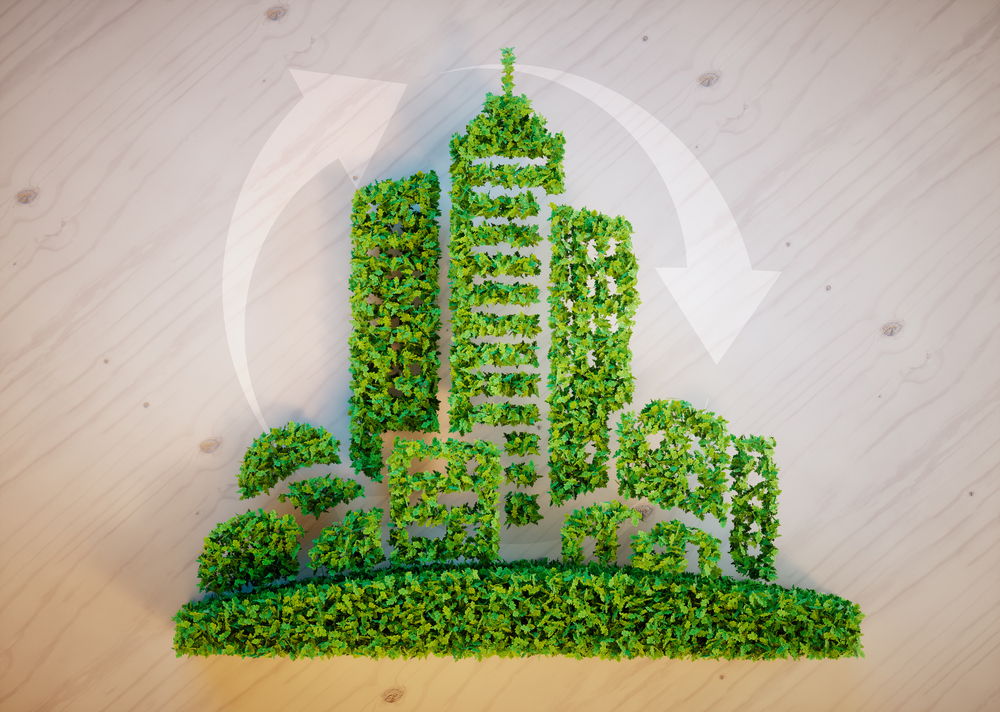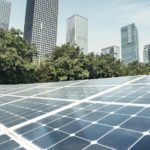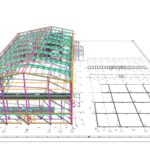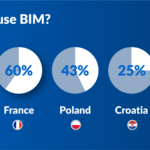Sector - Sustainability
Building green – the future of sustainability in construction

When it comes to sustainability, the construction sector hasn’t always been renowned for its forward-thinking initiatives. But are things changing, and what further changes can we expect within the industry moving forward? Dr Aidan Bell, co-founder of sustainable construction company Envirobuild, takes a look at where the green construction landscape stands and at the upcoming trends for 2018.
Construction sector change

Dr Aidan Bell, Envirobuild
Buildings are so integral to civilisation that some estimates attribute 50-60% of Greenhouse Gas (GHG) emissions to their various uses. As more and more people accept the detrimental effects of man-made climate change, it makes sense that the construction industry adapts its business approach to incorporate a more environmentally conscious stance.
Construction change is driven almost solely by economics (lack of capital investment due to boom and bust for example) and legislation (notably health and safety: 80% fewer fatalities per worker occur compared with 1990). There is no point fighting this fact. Instead, we need to work within these confines if we hope to make change in the construction industry. You’ll notice that this is a theme running through my predictions of the biggest sustainable changes we hope to see in the 2018 UK construction scene.
Ongoing energy usage has often already been legislated (CSH and BREAAM) and has an economic driver of decreased operational costs. There have also been indirect benefits gained through the greening of the electrical grid, with kg of CO2/kWh fallen by nearly 50% since 1990.
Ongoing energy is still the largest proportion of a building’s lifetime energy use. A domestic property used to have around 20% of the total lifetime energy embedded within the construction phase, whereas today that embedded energy usage is 40%. As efficiency improves, this is projected to move beyond 50% and therefore a holistic approach to building design becomes more important.
The biggest trends this year
Prefabrication
Prefabrication is important for sustainability in the embedded energy of construction. It takes a lot less energy and fewer mistakes are made, saving on energy consumption in the long run. China provides a good example of what can be done in terms of efficiency. The Mini Sky City in Changsha took just 17 days on site to build.

Closer to home, First Base’s announcement of the Silvertown development is a good example of construction using a modular strategy. It’s the tallest modular building in Europe, designed by HTA Design using Tide Construction and Vision Modular Systems. And it isn’t just large tower blocks where this works; Berkeley has a target of 10-15% of homes being built prefabricated, whilst Your Housing Group announced a joint venture to create thousands of prefabricated homes.
On-site production innovation is on the increase, with examples such as MACE’s radical factory at Stratford proving that the UK industry can still pioneer and is capable of moving forward to incorporate sustainability in all aspects of construction.
Building Information Modelling
Building Information Modelling (BIM) has the potential to include information about embedded energy of materials. Currently, this is not easy to track. However, with the available information put simply for architects and other stakeholders to handle, this should also decrease inefficiency between the office and site through better communication.
The use of BIM helps improve productivity as projects progress because all information is contained in a single location. BIM tools are based on 3-D models, which helps planners avoid design clashes. Some companies are exploring adding dimensions such as cost, time and resources in order to smooth project management in the execution phase and to facilitate maintenance during operations. The two latter could work towards increasing the productivity of the construction sector as a whole, which has remained almost stagnant for 70 years.
‘Performance Gap’
There is an acknowledged performance gap between efficient building design and efficient building use, with up to 200% extra energy used compared to design. BREEAM has proposed a Verification Stage to mitigate this in commercial buildings. This change should increase the focus upon end-user education (30-100% of extra energy), drive up construction standards (20-60% of extra energy) through increased QA, create better subcontractor coordination, as well as working towards providing better commissioning and technology handovers.
HVAC
The biggest gains in terms of improving ongoing energy usage are to be found within the incremental change of temperature control. Although not glamorous, we expect to see these savings driven by continuing improvement of insulation in roofs, walls and windows along with heat recovery systems.
Incremental changes include new algorithms driving efficiency of usage in different building types (particularly those without the scope to be engineered in full detail), decreasing complexity of maintenance and lowering water usage.
Material Longevity

We’re seeing building control starting to enforce the expected lifespan of buildings (50-year lifespan in EU codes) along with greater ease of recovery. Prefabrication also allows significantly easier material retrieval.
There is also an increasing trend towards the circular economy with many alternative building materials with higher recycled content like recycled plastic lumber, capturing market share.
On-site Generation
The Merton Rule continues to drive on-site generation, which is helped by the continuing fall of solar prices. The other gains are being made by the increasing use of CHP within district heating systems (eg Battersea, Citigen or Kings Cross), which can save 25% compared to standard gas.
Water Usage
Water usage could have an entire article of its own as it plays such a prominent part in green construction trends. Notably, we’ve seen an increasing interest in the use of grey water and dual plumbing systems, and will continue to do so in 2018. Greywater reuse provides benefits in the water supply subsystem by reducing the demand for fresh clean water. Similarly, dual plumbing works as two separate water piping systems which allows reclaimed water to be delivered to residential or commercial buildings.
Additionally, the increasing and correct installation of low flow toilets could save millions of litres of water a year. Similarly, vacuum toilet technology could become more widespread, reducing water usage by up to 75% as well as offering benefits to hygiene and design flexibility. This is just the tip of the iceberg in terms of the potential of water usage sustainability.
Moving forward
It’s clear that there is still a long way to go in achieving sustainability excellence in the construction sector. Despite this, we are seeing both incremental and larger positive steps in the right direction across various aspects of the sector, as discussed. As we move forward, I’m confident that these are only going to become more prominent as customs and mindsets adapt to the changing landscape of construction to embrace sustainability.
If you would like to read more articles like this then please click here.
Related Articles
More Sustainability News
- Major boost for mine water heat revolution
29 Jul 25
New study shows 87% of coalfield boreholes succeed.
- Plan to kickstart onshore wind revolution
17 Jul 25
Onshore wind is set to accelerate over the second half of the decade.
- Homes England supports Greencore Homes with new sustainable homes
16 Jul 25
Homes England will provide funding to support the delivery of Milton Heights.






